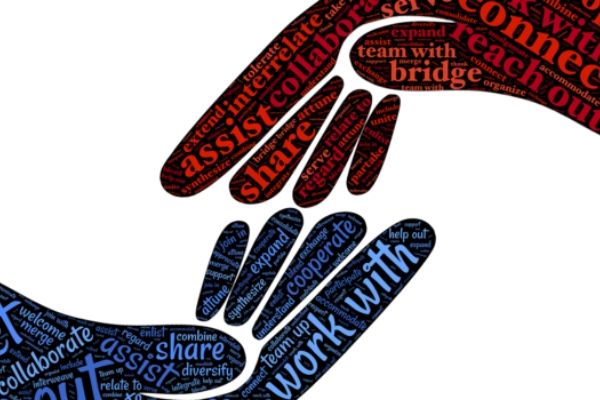Insights
INSIGHTS
All Topics
How charities can support beneficiaries with digital during Coronavirus
26 Mar 2020by Chloe Green
Charities are embracing technological solutions during this period of social distancing, letting people know they have their backs in a crisis
As we forge on through this pandemic, a new survey by the Small Charities Coalition shows a stark new reality – only around 20% of small charities say they are able to still provide normal services.
On top of the demands of meeting need in a time of financial uncertainty, many charities are having to adapt to maintain their services in a whole new environment, literally overnight. Those with the available resources to do so are suddenly having to ask what alternatives they can set up quickly to support their beneficiaries now that face to face contact is off the cards for the time being.
This is where the ingenuity and quick thinking of charity leaders is beginning to shine through. Alongside opportunities to re-skill staff in digital and transform ways of working and bring fundraising online, we’re starting to see inspiring examples of charities who are pulling out all the stops to still be there for their service users in digital form.
Support from afar
Many charities have opened up new communication channels to support their service users and volunteers, replacing physical services with digital ones where there is the opportunity. Channels such as instant messaging and webinars, which charities may have otherwise shied away from, are now ideal opportunities to reach people who are otherwise isolated.
Domestic abuse charity Chayn told the Independent: “We are anticipating domestic abuse will increase during Coronavirus and we are preparing services for this. We are producing more content online. If you are living in the vicinity of an abuser, you need coping mechanisms. We are run by volunteers and are now working in the evenings too. A lot of survivors go to local trauma groups and group therapy but can’t get that anymore, so we are running a trauma group on Telegram – a highly secure instant messaging app.”
Religious organisations that have traditionally been about togetherness and mass gatherings are continuing to be beacons of hope and community for people through the medium of the internet. The Church of England, for example, has published a list of digital resources that its staff around the country can use, and content for church-goers such as apps for prayer, a daily prayer audio service, and audio sermon content via smart speakers like Alexa.
Part of the solution
As well as continuing to run their normal services in digital ways, charities are facing increased need from vulnerable beneficiaries who may be more at risk from the virus and looking to them for reassurance and information. Charities are showing how they can link their cause to Coronavirus and be part of the effort through online information, particularly when service users may already be feeling isolated.
Charities that have published online guidance pages on their websites for people with specific health problems who may fall into the at-risk group include the British Heart Foundation, Cystic Fibrosis Trust, Asthma UK and Diabetes UK.
And although people with epilepsy are not automatically considered a high-risk group, The Epilepsy Society is leading by example with this clear and detailed ’FAQ’ blog that calls on expert voices to explain and reassure.
Charities that have been great at recognising how the Coronavirus pandemic might affect their beneficiaries and responding with digital solutions include The National Eczema Society, which has published online advice on handwashing techniques for people with eczema and other skin conditions that might be exacerbated by all the soap and water.
Mental health charity Anxiety UK has put in special effort to show empathy towards its service users during this especially anxiety-inducing time, making it as easy as possible for people to access information, resources and support from one page. Its content under the #Coronaanxiety hashtag addresses coping mechanisms for people with anxiety conditions under the stress of lockdown.
Users can access regular online support groups that are streamed live on YouTube, and interactive webinars. They’ve also collected resources from other news sights with useful links, and free online courses on relaxation techniques and mindfulness. They’ve even linked up with popular mindfulness meditation app Headspace to offer its members free subscriptions.
Charities running this sort of resource need to ensure they keep their information regularly updated, making it clear when the page was last updated, as advice can change very quickly.
Help for everyone
Now more than ever, considerations around accessibility have to be at the forefront of charities’ digital services. Content and tools to help people through a crisis have to be easy for everyone to use, including service users who might not normally be accessing digital services because of various barriers.
Our recent podcast ’Is your charity digitally accessible?’ discussed some of these considerations, and we shared some practical tips here.
Some charities, like deaf health charity Signhealth, are showing support for its service users by translating the government’s daily Coronavirus briefings into a series of sign language videos along with other key advice.
Accessibility is also about recognising where to fill in a skills gap. Age UK’s telephone support line has always been important to its service users, and even more so now. But the charity is recognising the need to support carers and relatives of its service users, who may be more digitally aware, to help older loved ones benefit from digital communication that could help them feel more connected. Its online Coronavirus information hub includes guides from the BBC on how to introduce older relatives and friends to tech such as video calling.
21 Nov 2024by Josie Sparling
How one charity more than doubled its event’s incomeSponsored Article
21 Nov 2024by Ioan Marc Jones
How to make Christmas cards and fundraise for charity
Our Events
Charity Digital Academy
Our courses aim, in just three hours, to enhance soft skills and hard skills, boost your knowledge of finance and artificial intelligence, and supercharge your digital capabilities. Check out some of the incredible options by clicking here.


















